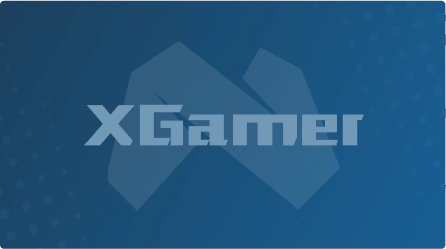
Valve’s Steam Machine specs show they learned from their failure a decade ago
Valve tried making Steam Machines a thing once, long ago, but they flopped so hard that we barely even remember them. Still, Valve has changed, and the new Steam Machine looks like an entirely different machine, so let's look at why they might actually pull it off this time around.
Table of contents
Better and friendlier Steam Controller
ARM Support is a great strategic advantage
One Steam Machine to rule them all
Consoles are too comfortable right now
Why the Steam Machine can really pull it off
Better and friendlier Steam Controller
Image via Steam
The first time I saw a PS1 controller was in a TV ad, and it just looked too different from any controller of its time to have me sold on it. It was only when I tried it out at a store's display that I realized it was the most ergonomic controller at that point.
The original Steam controller was actually pretty good, but its radically unique design just threw so many off before they even got to try it. That was made worse by how people could only buy it online, missing out on the chance to test it themselves before passing a harsh judgment. The new Steam controller keeps the features of the original, while looking a lot more like a regular controller would. The Steam Machine isn't meant to work solely with the new Steam Controller, but that's a great way to conquer the more casual-oriented family demographic. The device used to interact with the new system must look ergonomic and accessible even before potential users experience it.
ARM Support is a great strategic advantage
As caught by Digital Foundry , the new Steam Machine might have a powerful trick up its sleeve. Long story short, the new Steam Machine features ARM support, which will allow it to fight on all fronts. The main reason why the original Steam Machine failed was that it ran on Linux, and just didn’t entice enough developers to create native Linux ports of their games, which resulted in a killer lack of output. The new Steam Machine will run on Steam OS 3, which comes from Linux as well, yes, but it'll be compatible not only with PC games, but also mobile ones.
One Steam Machine to rule them all
Everything about the original Machine was too confusing, to the point that there wasn’t even just "one" Steam Machine, but a bunch of different machines from different manufacturers with the Steam Machine brand slapped on them. On top of adding extra layers of confusion, this exacerbated existing problems. The original Steam Machine was meant to compete with PCs, but it had a limited or null range for upgrades, depending on its manufacturer. It was, somehow, both a more limited and more confusing product than a PC.
We still don't know the range of upgradeability of the new Steam Machine, but it'll feature a unified hardware and, also very importantly, design. It might seem stupid, but this is what makes people see the machine as a strong product, and not as one of many confusing and less alluring alternatives to a PC. Have you noticed its cube shape and how everyone has been calling it the "Gabe Cube"? That sounds a lot like Valve might've cooked themselves behind the scenes to take off in a seemingly organic way, and, either way, it sure has. That's a sign that something is happening.
Consoles are too comfortable right now
The console market currently sucks, with the output of games at an all-time low and prices at an all-time high. Back then, even the cheapest Steam Machine would cost you $499, rendering it incapable of competing with the PS4. Today, even at the higher price point that Valve is hinting at for the Steam Machine, a lot of people might just shell out a few more dollars to get a more powerful system with access to a much larger library—one that even includes many of the best PlayStation games out there.
Why the Steam Machine can really pull it off
In case you're still not aware of it, I must break it to you that we're currently in the era of "Enshittification", a term coined by Sci-Fi author Cory Doctorow that describes the process by which online platforms become less effective and sometimes straight-up sillier for no apparent reason. Sadly, that also rings true regarding tech products, despite all manner of technological advances. Valve, however, seems serious about delivering something new that also performs old functions better.
Also, Valve is simply in a much better position to promote its own hardware right now. The Steam Deck is a massive success, a miraculous non-Nintendo piece of mobile hardware that's not only selling like hot cakes but has even inspired a wide array of competitors, effectively creating a new line of hardware in the mobile-PC hybrid arena.
Despite its current ubiquity, Steam wasn't always the juggernaut it currently is. The idea of a launcher might sound pretty useful, so long as it's not competing with a bunch of others, but not everyone was immediately keen on an extra step required to play a game. Valve, however, ended up improving Steam until it became essential to every PC gamer. Steam Machines might just follow suit, regardless of how silly that sounds right now.
The post Valve’s Steam Machine specs show they learned from their failure a decade ago appeared first on Destructoid .
 Popular Content
Popular Content Explore Topic
Explore Topic



